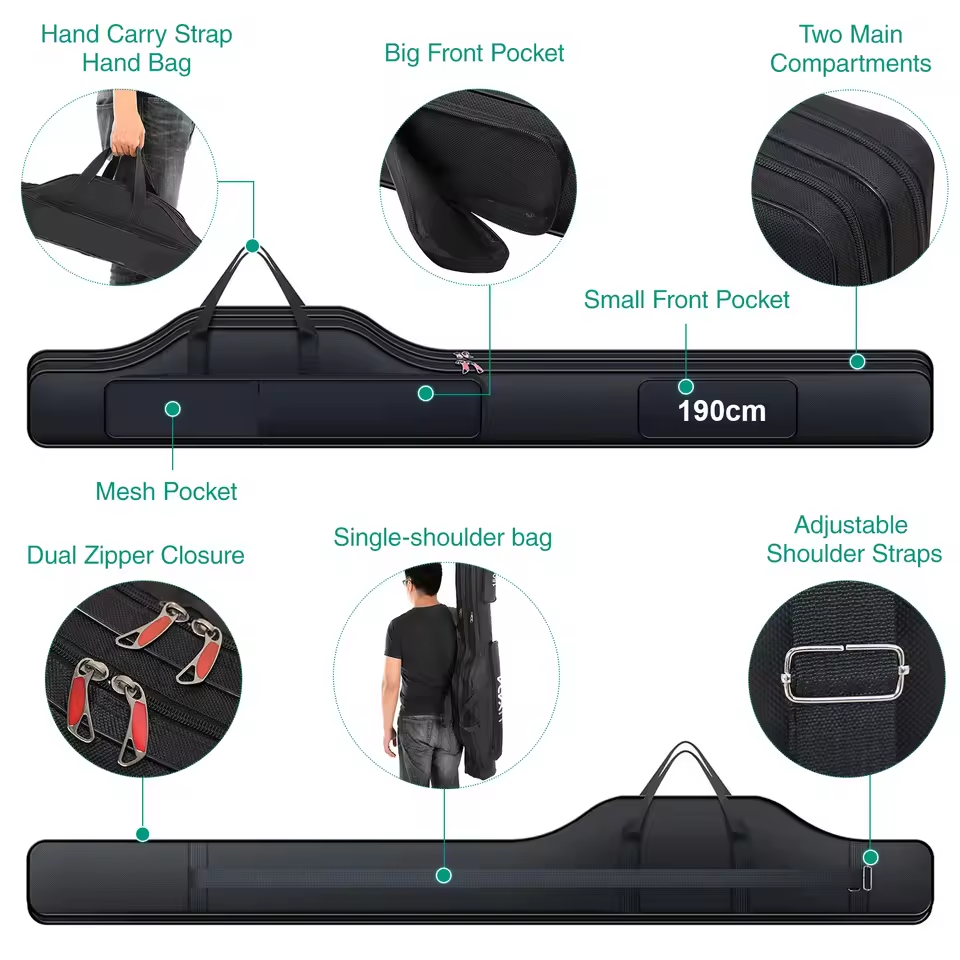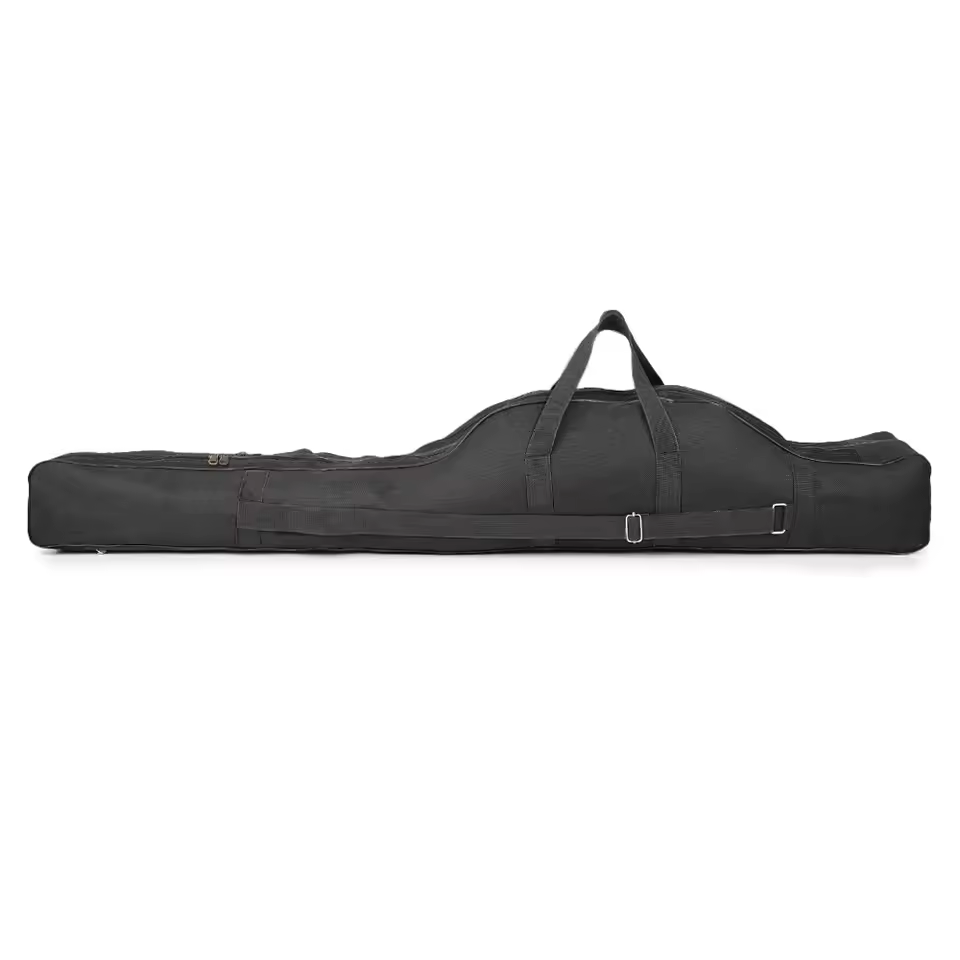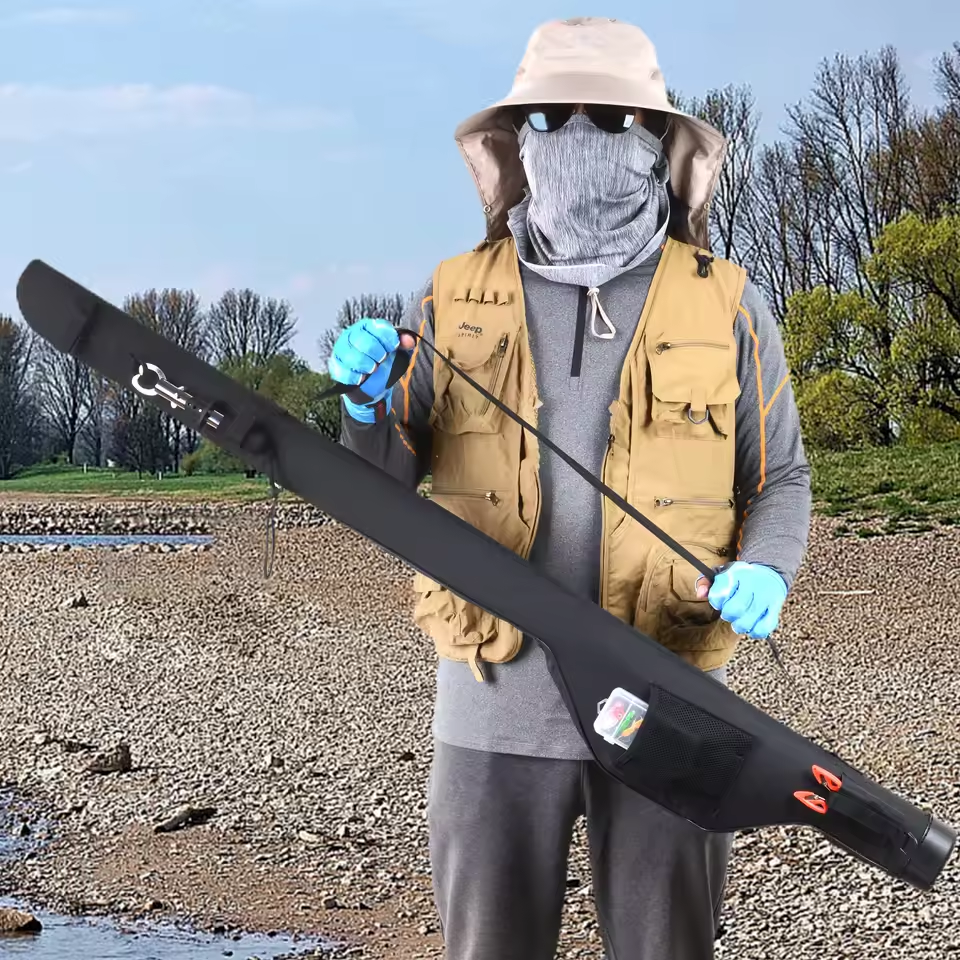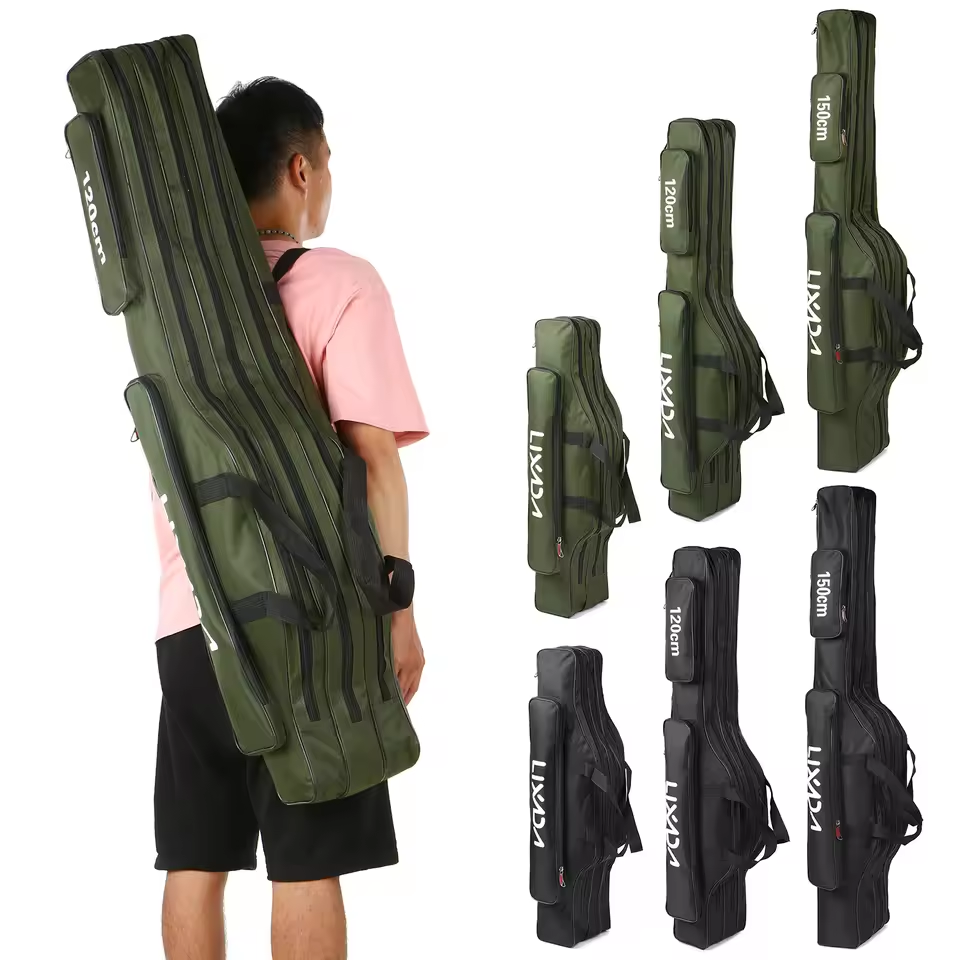What Are Fishing Tackle Bags?
Fishing tackle bags are essential for anglers to store and transport fishing gear. They are designed to organize tools like lures, hooks, lines, and other necessary accessories. Tackle bags make fishing trips more efficient and enjoyable.

Definition and Purpose of Tackle Bags
Fishing tackle bags are portable storage solutions. They are made to carry and organize fishing equipment. Unlike traditional tackle boxes, they are soft bags featuring multiple compartments and pockets. These bags help anglers quickly access essential items while keeping everything protected and tidy. Their lightweight design makes them easy to carry on fishing trips.
The primary purpose of a fishing tackle bag is organization. It ensures all your tools are stored securely in one place. They also prevent gear from getting tangled or damaged. Additionally, tackle bags are highly portable, perfect for both long trips and quick outings.
Key Differences Between Tackle Boxes and Tackle Bags
Tackle boxes and tackle bags serve similar purposes but differ in design and features:
- Material: Tackle boxes are hard and rigid, often made of plastic. Tackle bags are made of soft, flexible materials like nylon.
- Portability: Tackle bags usually have straps for easy carrying. Tackle boxes lack this and can be cumbersome.
- Weight: Tackle bags are lightweight and easier to move around compared to heavy, bulky boxes.
- Storage options: Tackle boxes have fixed compartments. Tackle bags feature adjustable dividers and multiple pockets for better organization.
- Durability: Tackle boxes are sturdy but not flexible. Tackle bags often include waterproof materials, protecting gear in wet conditions.
Understanding these differences helps anglers choose the right option for their fishing style and needs. While tackle boxes are better for stationary setups, tackle bags excel in portability and convenience.
Benefits of Using a Fishing Tackle Bag
Fishing tackle bags offer several advantages that enhance the fishing experience. They are designed to simplify storage, transportation, and protection of your fishing gear.
Portability and Convenience
Fishing tackle bags are lightweight, making them easy to carry on trips. Most bags come with shoulder straps or handles for comfortable mobility. Their compact design allows anglers to pack and transport them effortlessly. Unlike bulky tackle boxes, these bags fit well in tight spaces. Whether fishing from the shore or a boat, tackle bags bring unmatched convenience.
Organization and Storage Capacity
Tackle bags are known for their superior organization features. They provide multiple compartments, pockets, and dividers for storing gear neatly. Adjustable compartments let anglers customize storage for different tools. This keeps lures, lines, and hooks untangled and easily accessible. Their space-efficient design accommodates various gear types, reducing clutter.
Durability and Waterproof Features
Quality fishing tackle bags are made from durable materials such as nylon or polyester. Many bags include waterproof coatings to protect gear from rain or water splashes. Sturdy construction ensures the bag can handle heavy equipment without tearing. Weatherproof features prevent damage during outdoor trips, keeping your tools safe and dry.
Types of Fishing Tackle Bags
Fishing tackle bags come in different styles to suit various fishing needs. Each type offers unique features, providing options for anglers with different preferences.
Backpack-Style Tackle Bags
Backpack-style tackle bags combine storage with hands-free convenience. They feature two shoulder straps for easy carrying. These bags are ideal for anglers covering long distances on foot. They have multiple compartments and are perfect for organizing gear. Some backpacks include padded backs and straps for added comfort.
Sling Tackle Bags
Sling tackle bags are compact and easy to maneuver. They have a single strap worn diagonally across the body. This design allows quick gear access without removing the bag. Perfect for quick trips, sling bags are lightweight and versatile. They are ideal for minimalists or shore anglers who carry less gear.
Traditional Shoulder Tackle Bags
Shoulder tackle bags are classic and versatile options. They feature a single shoulder strap or handle for carrying. Ideal for moderate gear loads, these bags work well for boat or pier fishing. They often include adjustable compartments and a straightforward design. Shoulder bags blend simplicity with functionality.
Rolling Tackle Bags
Rolling tackle bags offer maximum capacity and easy transport. Equipped with wheels and a telescoping handle, they reduce strain on anglers. These bags are suitable for extensive equipment or longer fishing trips. Despite their size, rolling bags remain organized with compartments and trays. They are perfect for anglers needing to carry heavy gear with ease.
Essential Features to Look for in a Fishing Tackle Bag
Fishing tackle bags come in many shapes and styles. Choosing the right features ensures your gear stays organized and protected. Below are the essential aspects to consider when selecting a tackle bag.
Material and Build Quality
Durable materials keep your bag functional for years. Nylon and polyester are popular options. Look for reinforced stitching for added strength. Metal zippers ensure smooth access and resist wear over time. Choose a bag that can handle outdoor conditions without tearing or degrading.
Number and Size of Compartments
Compartments help keep your gear sorted and easy to find. Look for adjustable dividers to fit various tools. Multiple pockets allow for efficient storage of lures, hooks, and accessories. Larger compartments can accommodate bigger items like reels or tackle trays. Select sizes based on your specific equipment needs.
Waterproof and Weatherproof Options
Waterproof bags shield your belongings from rain or splashes. Look for coated fabric to resist moisture. Weatherproof designs protect gear in extreme conditions like heat or cold. Opt for models with sealed or waterproof zippers for maximum security. Keeping your gear dry prevents rust and damage during trips.
Ergonomic Design and Comfort
Comfortable designs make carrying gear easier. Padded shoulder straps reduce strain during long hikes. Adjustable straps ensure a secure fit for various body sizes. Choose bags with lightweight builds to minimize effort. Ergonomic handles make lifting heavy equipment more manageable. Features like ventilation on the back improve comfort in hot weather.
Top Brands and Popular Options for Fishing Tackle Bags
Fishing tackle bags come from various companies, each offering unique features and designs. Choosing the right brand ensures quality and durability.
Leading Companies and Their Products
- Plano: Plano is known for its high-quality tackle bags and boxes. Their products often include waterproof materials and durable zippers. Plano offers backpack-style and traditional shoulder bags for different needs.
- Wild River: Wild River specializes in multifunctional tackle bags. Many of their models have built-in LED lights for better visibility. Their bags feature multiple compartments for organized gear storage.
- KastKing: KastKing designs strong, lightweight tackle bags. Their water-resistant designs protect gear from rain and splashes. KastKing products are highly portable and ideal for rugged outdoor use.
- SpiderWire: SpiderWire creates stylish and ergonomic fishing tackle bags. Focused on backpacks, their designs often feature padded straps and back support. Their bags integrate technology-friendly pockets for extra utility.
- Flambeau: Flambeau products are built with hard plastic bases for added durability. They excel in creating rolling tackle bags for anglers with heavy gear. Flambeau combines functionality with high-quality materials.
Recommended Models Based on Fishing Styles
- For Shore Fishing: Sling tackle bags like SpiderWire’s Slingback are ideal for quick access gear. They are lightweight and compact.
- For Boat Fishing: Plano’s Guide Series tackle bags offer a lot of storage space and weatherproof protection. Their durability makes them perfect for wet environments.
- For Hiking Trips: Wild River’s Nomad XP backpack is designed for comfort during long walks. It includes multiple compartments and padding for support.
- For Heavy Equipment: Flambeau’s Rolling Tackle Depot is ideal for carrying large quantities of gear. Its wheels and handle ease transportation.
Selecting the right brand and model ensures reliability and efficiency during fishing trips.
How to Choose the Right Fishing Tackle Bag for Your Needs
Choosing the right fishing tackle bag requires careful thought. Your choice impacts how well your gear is protected, organized, and transported. Below are important factors to consider for selecting a bag that matches your requirements.
Assessing Your Fishing Type and Gear
- Identify Your Fishing Style: Different fishing styles need different tackle bags. Boat anglers may prefer larger, waterproof options, while shore anglers often need lightweight sling bags.
- Consider Your Gear: Assess the size and amount of equipment you’ll carry. Bring essentials like lures, hooks, lines, and reels into account.
- Think About Accessibility: Quick access is vital for certain fishing scenarios. Choose a design that allows easy gear reach, such as sling or backpack-style bags.
- Match the Bag to the Environment: Fishing in wet or muddy areas? Waterproof or weatherproof bags perform best in such conditions.
Considering Budget and Preferences
- Set a Budget: Tackle bags come in a wide price range. Decide how much you are willing to invest.
- Evaluate Quality vs. Price: Higher-quality bags often last longer and provide better features. Balancing cost with functionality ensures a better investment.
- Choose Customization Options: Some bags come with adjustable compartments or removable trays. Select options that align with your style.
- Factor in Aesthetic Preferences: While performance matters, the color and style of the bag should suit your taste.

Practical Tips for Selection
- Test Comfort Levels: Test padded straps or ergonomic handles for comfortable carrying during long trips.
- Inspect Material Quality: Check for durable fabric, reinforced stitching, and reliable zippers.
- Ensure Adequate Compartments: Look for multiple sections to organize lures, hooks, and other gear efficiently.
- Trial for Mobility: If possible, carry the bag to feel its weight and maneuverability.
- Check Brand Reputation: Reputable brands like Plano or Wild River assure durability and quality in their products.
By considering these factors, you can select a tackle bag perfectly suited to your needs and enjoy hassle-free fishing trips!
Maintenance and Care for Fishing Tackle Bags
Proper maintenance ensures your fishing tackle bag remains functional and durable for years. Regular care prevents damage and prolongs its lifespan. Below are key tips for cleaning and storing your tackle bag effectively.
Cleaning and Storing Properly
- Remove All Contents: Empty your bag entirely before cleaning to avoid damaging your gear.
- Use Mild Detergent: Clean the bag with a damp cloth and mild soap to remove dirt and stains.
- Avoid Harsh Chemicals: Steer clear of strong cleaners that may weaken the bag’s material.
- Dry Thoroughly: Air-dry your bag completely to prevent mold or unpleasant odors.
- Inspect for Damage: Check zippers, straps, and seams for signs of wear or tears.
- Store in a Cool, Dry Place: Keep the bag in a clean, moisture-free environment when not in use.
- Organize Your Gear: Sort your tools before storing them back, ensuring they remain tangle-free and accessible.
By adhering to these steps, your tackle bag stays clean and organized for future fishing trips.
Extending the Lifespan of Your Bag
- Handle With Care: Avoid overloading the bag to prevent stress on zippers and seams.
- Protect Against Rough Surfaces: Place the bag on smooth surfaces to prevent abrasion or punctures.
- Check Waterproof Coating: Maintain the coating with specialized sprays if it starts wearing out.
- Avoid Direct Sunlight: Extended exposure to sunlight can fade colors and weaken fabrics.
- Repair Minor Damages Promptly: Fix small tears or broken straps to avoid further deterioration.
- Seasonal Routines: At the end of the fishing season, clean and inspect the bag thoroughly.
- Follow Manufacturer Guidelines: Refer to the care instructions from the brand for specific maintenance tips.
Taking these actions helps keep your fishing tackle bag in top-quality condition and ready for any adventure.
Frequently Asked Questions About Fishing Tackle Bags
How Much Should I Spend on a Tackle Bag?
Choosing the right budget depends on your fishing needs and frequency. Casual anglers often benefit from affordable options under $50. These provide basic features and adequate durability.
For regular or professional anglers, investing in quality bags is wiser. Mid-range tackle bags between $50 and $150 offer enhanced material strength, waterproof features, and great organization options.
High-end bags over $150 suit specialized fishing needs. They include both premium materials and advanced features like built-in LED lights or large rolling designs. Assess how often you’ll use the bag and choose accordingly.
Remember, price reflects longevity and functionality. Spending a bit more can save money in the long run.
What Are the Best Ways to Organize a Tackle Bag?
Organizing your tackle bag improves efficiency during fishing trips. Here are some quick tips:
- Use Adjustable Dividers: Sort gear based on size and type for quick access. Keep hooks separate from lures.
- Store Frequently Used Items: Place the most-used tools in outer pockets or top compartments.
- Label Sections: Add labels or color codes to compartments for easy identification.
- Keep Small Items Secure: Use small zippered pouches within the bag for tiny accessories like swivels.
- Group by Purpose: Organize your tools by function. For example, have a section for bait and another for lines.
- Avoid Clutter: Regularly clean your bag and remove outdated or damaged items.
A well-organized tackle bag reduces confusion and saves time, letting you focus on catching fish efficiently.